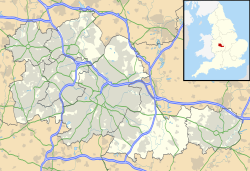
The Sherwood Rangers Yeomanry (SRY) was a British Yeomanry regiment. In 1967 it was amalgamated with other units to form the Royal Yeomanry (RY), a light cavalry regiment of the Army Reserve. Originally raised as the Nottinghamshire Yeomanry Cavalry in 1794, the regiment was used on several occasions in the 19th Century to maintain law and order. During the Second Boer War and both World Wars the regiment earned 44 battle honours. It is now one of the six squadrons of the Royal Yeomanry (RY), a light cavalry regiment of the Army Reserve. Designated as 'A' Squadron, the Sherwood Rangers Yeomanry's current role is to support the Light Cavalry Regiments on operations by providing reconnaissance soldiers.

The Essex Yeomanry was a Reserve unit of the British Army that originated in 1797 as local Yeomanry Cavalry Troops in Essex. Reformed after the experience gained in the Second Boer War, it saw active service as cavalry in World War I and as artillery in World War II. Its lineage is maintained by 36 Signal Squadron, part of 71 (Yeomanry) Signal Regiment, Royal Corps of Signals.

The 1st Cavalry Division was a regular Division of the British Army during the First World War where it fought on the Western Front. During the Second World War it was a first line formation, formed from Yeomanry Regiments. It fought in the Middle East before being converted to the 10th Armoured Division.
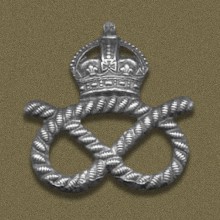
The Staffordshire Yeomanry (Queen's Own Royal Regiment) was a mounted auxiliary unit of the British Army raised in 1794 to defend Great Britain from foreign invasion. It continued in service after the Napoleonic Wars, frequently being called out in support of the civil powers. It first sent units overseas at the time of the Second Boer War and saw distinguished service in Egypt and Palestine in World War I. During World War II it gave up its horses and became a tank regiment, serving in the Western Desert and landing in Normandy on D-Day. Postwar the Staffordshire Yeomanry became part of the Queen's Own Mercian Yeomanry with one of the squadrons being designated 'Staffordshire Yeomanry' until 2021.
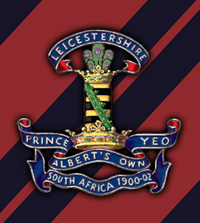
The Leicestershire Yeomanry (Prince Albert's Own) was a yeomanry regiment of the British Army, first raised in 1794 and again in 1803, which provided cavalry and mounted infantry in the Second Boer War and the First World War and provided two field artillery regiments of the Royal Artillery in the Second World War, before being amalgamated with the Derbyshire Yeomanry to form the Leicestershire and Derbyshire (Prince Albert's Own) Yeomanry in 1957. The regiment's lineage is currently perpetuated by E (Leicestershire and Derbyshire Yeomanry) Squadron of the Royal Yeomanry.
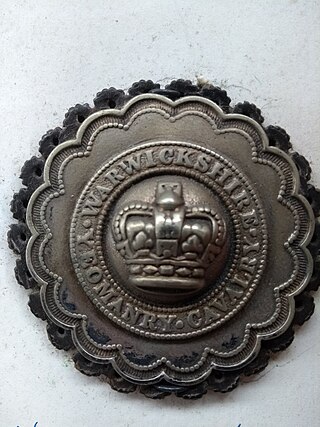
The Warwickshire Yeomanry was a yeomanry regiment of the British Army, first raised in 1794, which served as cavalry and machine gunners in the First World War and as a cavalry and an armoured regiment in the Second World War, before being amalgamated into the Queen's Own Warwickshire and Worcestershire Yeomanry in 1956. The lineage is maintained by B Squadron, part of The Royal Yeomanry.
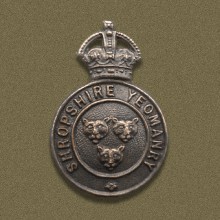
The Shropshire Yeomanry was a yeomanry regiment of the British Army, first raised in 1795, which served as a cavalry and dismounted infantry regiment in the First World War and as a cavalry and an artillery regiment in the Second World War. It was then amalgamated with the Shropshire Royal Horse Artillery.

The North Somerset Yeomanry was a part-time cavalry regiment of the British Army from 1798 to 1967. It maintained order in Somerset in the days before organised police forces, and supplied volunteers to fight in the Second Boer War. It served on the Western Front in the First World War. At the outbreak of the Second World War, it continued to operate in the mounted role and then as a specialist signals unit. Postwar it joined the Royal Armoured Corps and later became infantry. Its lineage today is maintained by 93 Squadron 39 (Skinners) Signal Regiment.

The South Nottinghamshire Hussars is a unit of the British Army formed as volunteer cavalry in 1794. Converted to artillery in 1922, it presently forms part of 103 Regiment, Royal Artillery.

The Duke of York's Own Loyal Suffolk Hussars was a Yeomanry regiment of the British Army. Originally formed as a volunteer cavalry force in 1793, it fought in the Second Boer war as part of the Imperial Yeomanry. In the World War I the regiment fought at Gallipoli, in Palestine and on the Western Front. The unit was subsequently converted into a Royal Artillery unit, serving in the anti-tank role North Africa, Italy and France during World War II. The lineage is maintained by No. 677 Squadron AAC.

The Queen's Own Yorkshire Dragoons was a yeomanry regiment of the British Army in existence from 1794 to 1956. It was formed as a volunteer cavalry force in 1794 during the French Revolutionary Wars. Its volunteer companies played an active role with the Imperial Yeomanry in the Second Boer War, but opportunities for mounted action were much more restricted during the First World War and it was temporarily converted into a cycle unit. It remained a cavalry regiment throughout the interwar years, and was the last horsed unit of the British Army to see action, in the Syria–Lebanon Campaign of 1941, finally mechanising the following year. It served as motorised infantry in the North African and Italian campaigns of the Second World War. In 1956, it merged with the Yorkshire Hussars and the East Riding of Yorkshire Yeomanry to form the Queen's Own Yorkshire Yeomanry. Its lineage is continued today by A Squadron, the Queen's Own Yeomanry.
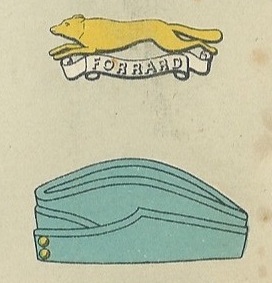
The East Riding of Yorkshire Yeomanry was a unit of the British Army formed in 1902. Units of Yeomanry Cavalry were raised in the East Riding of Yorkshire in the 18th and early 19th centuries at times of national emergency: the Jacobite Rising of 1745, the French Revolutionary Wars and the Napoleonic Wars. These were stood down once each emergency was over. The East Riding of Yorkshire Yeomanry, was established in 1902, and this saw action during the First World War both in the mounted role and as machine gunners.
The Denbighshire Hussars was a Welsh Yeomanry regiment of the British Army formed in 1794. It saw service in the First World War before being converted into a unit of the Royal Artillery. The lineage has been continued by 398 Squadron, Royal Logistic Corps.

The Westmorland and Cumberland Yeomanry was a Yeomanry Cavalry regiment of the British Army with its origins in 1798. The regiment provided troops for the Imperial Yeomanry during the Second Boer War and served on the Western Front in the First World War, latterly as infantry. The regiment converted to artillery in 1920 and served as such in the early years of the Second World War, before becoming part of the Chindits in Burma. Postwar it served as a gunner regiment until 1971 when the title disappeared.
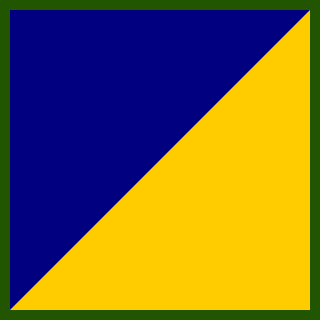
The Pembroke Yeomanry was an auxiliary regiment of the British Army dating back to 1794. It saw active service in the French Revolutionary War, the Second Boer War, World War I and World War II. Its lineage is maintained by 224 Transport Squadron, part of 157 (Welsh) Regiment RLC in the Army Reserve.

The Hertfordshire Yeomanry was a Yeomanry Cavalry regiment of the British Army that could trace its formation to the late 18th century. First seeing mounted service in the Second Boer War and World War I, it subsequently converted to artillery. Three regiments saw service in World War II, one of which was captured at the fall of Singapore. It continued through various postwar amalgamations and its lineage was maintained by 201 Battery, 100th (Yeomanry) Regiment Royal Artillery until that unit was placed in suspended animation in 2014.
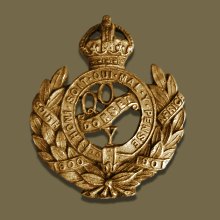
The Queen's Own Dorset Yeomanry was a yeomanry regiment of the British Army founded in 1794 as the Dorsetshire Regiment of Volunteer Yeomanry Cavalry in response to the growing threat of invasion during the Napoleonic wars. It gained its first royal association in 1833 as The Princess Victoria's Regiment of Dorset Yeomanry Cavalry, and its second, in 1843, as the Queen's Own Regiment of Dorset Yeomanry Cavalry.
The Surrey Yeomanry was a unit of the British Army first formed as volunteer cavalry in 1794. It was reformed in 1901 and saw varied service in the First World War. During the interwar period, it converted to artillery and during the Second World War one of its regiments distinguished itself during the retreat to Dunkirk, saw action during the Second Battle of El Alamein, and also saw service in Sicily and Italy. Its other regiment served in East Africa, the Siege of Tobruk, and in Iraq and Persia. The regiment's lineage is maintained today by 2 Field Troop, 579 Field Squadron (EOD), part of 101 (London) Engineer Regiment (Volunteers).

The Friars' Walk drill hall is a former military installation in Stafford.
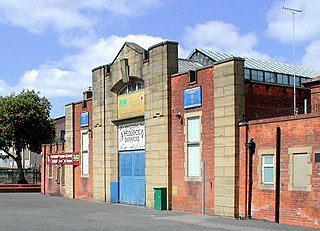
Wenlock Barracks is a military installation on Anlaby Road in Kingston upon Hull, England.

